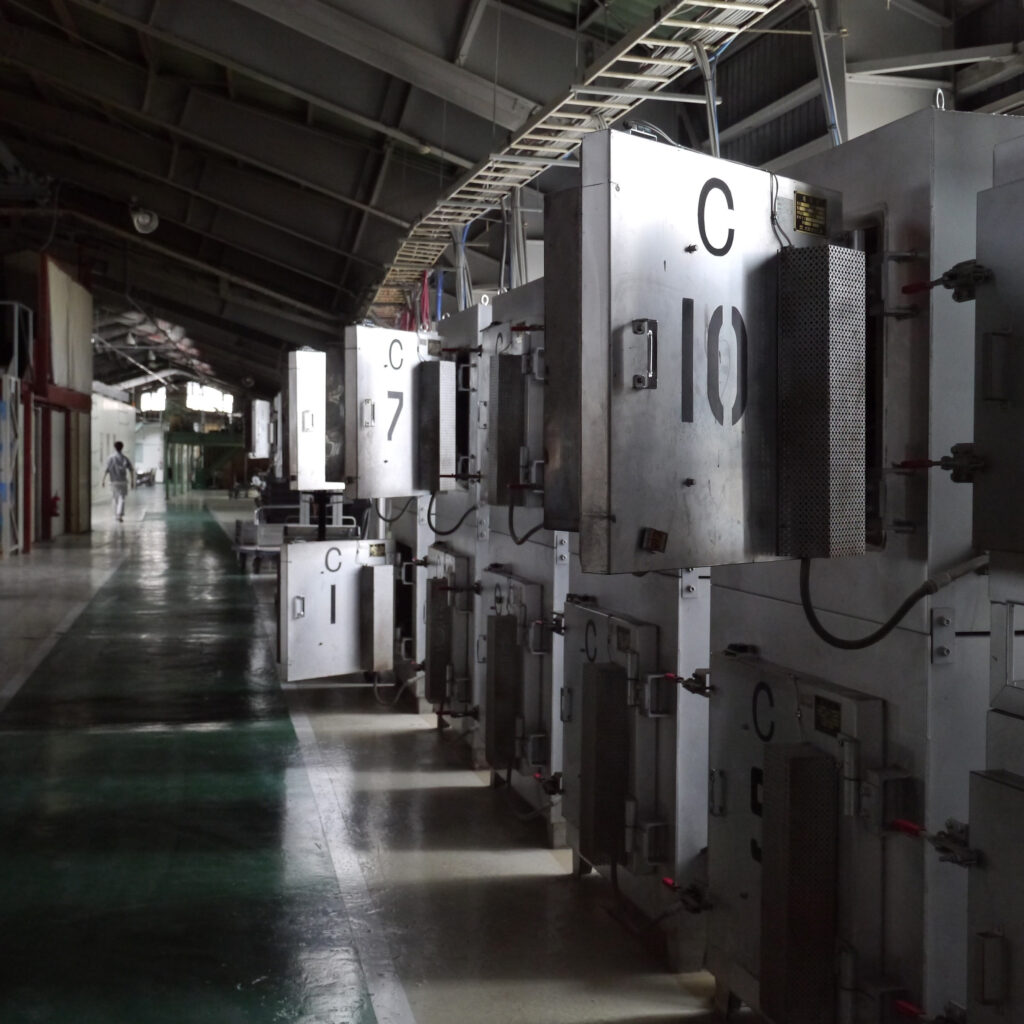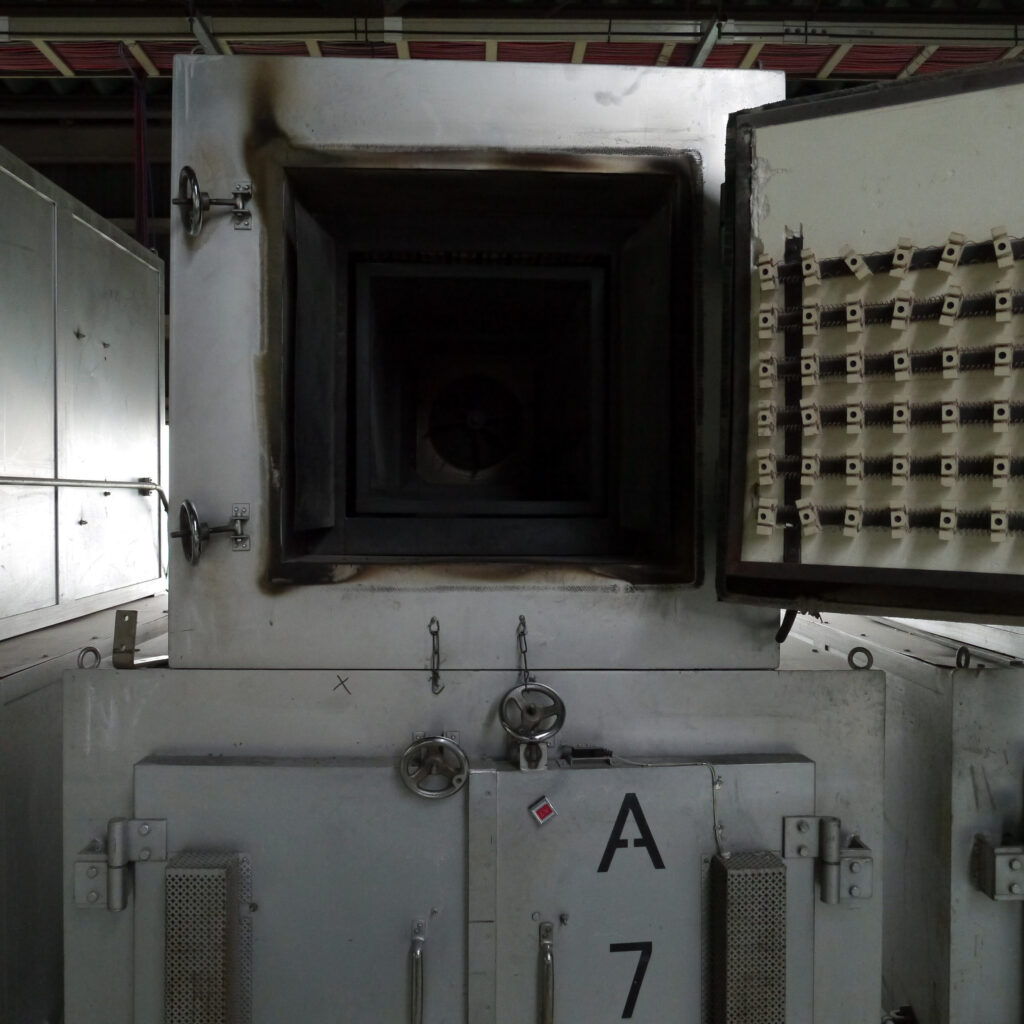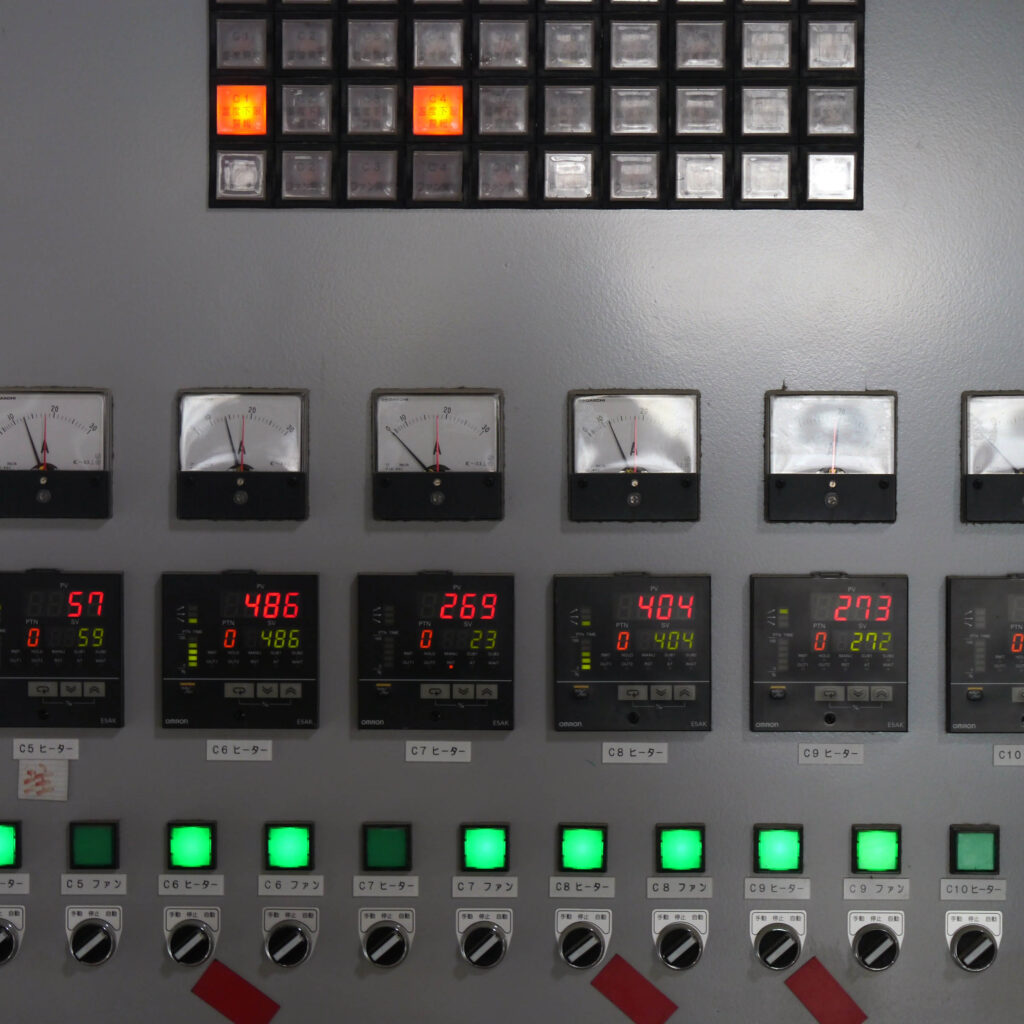Annealing to cure optical glass (1)

The above photograph shows electric furnaces installed in large numbers at Cosina’s Obuse factory. They are known as “annealing furnace.”
Lens blanks formed by high-temperature pressing are not transported to the grinding and polishing processes as they are. Before that, they are reheated in these annealing furnaces, and then their temperature is slowly lowered. If the molecular structure inside the optical glass is disturbed by pressing process, the glass cannot adequately function as a lens. So, the molecular structure of the optical glass is homogenized by rigorous heat treatment.

The refractive index is the most fundamental parameter in lens design and differs depending on the type of optical glass. If those numeric values are unstable, it threatens the very performance of the end optical product. The refractive index of a lens blank is uneven after press-molding. Immediately after being pressed, a lens blank may look good in appearance, but it still needs more curing. So, in the annealing furnaces, the blanks must undergo a curing process in order to get to the required characteristics. The refractive index of optical glass can be closely controlled in the annealing process. That is to say, it all depends on annealing whether optical glass is of good quality or not.

So, how can the required refractive index be obtained? The appropriate annealing method differs according to the type of optical glass material. When optical glass is heated, its molecules become active at a certain temperature. This is called a “transition point.” This transition point differs widely from about 580ºC to 700ºC, according to the type of glass material. Technically, the characteristics of optical glass differ according to not only the type of glass material but also to the pot used in manufacturing. Annealing is fine-tuned to the type and the lot of optical glass that has been cut, weighted, polished in barrels, and pressed at a high temperature. Without this process, it is impossible to manufacture high-end optical devices.